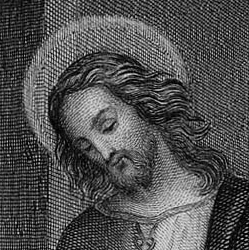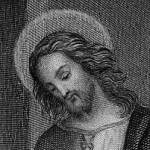For the past two-thousand years, Christians have engaged with the routine process of policing the boundaries of Christianity—defining heresy and orthodoxy and determining who belongs to the Christian ‘club’. Formal definitions tend to coalesce on adherence to certain core Christian tenets, texts, and understandings of the relationship between man and the divine. The Church of Jesus Christ of Latter-day Saints claim to Christian fellowship is problematic to mainstream Christians because Latter-day Saint assertions seem to challenge every fundamental orthodoxy which defines the traditional Christian. Latter-day Saints reject the Trinity and have a tense relationship with the discipline of theology and the various developments of Christian thought and dispute the finality of the Bible and the closed canon determined by ecumenical councils in the early Christian era. Furthermore, Latter-day Saints tend to be distrustful of the defining statements of Christian belief—the Apostles’ and Nicene Creeds. While this article is too brief to fully engage with every discrepancy between the Latter-day Saints and mainstream Christianity, it will be part of a series which demonstrate that the Apostles’ Creed and the Latter-day Saint movement are compatible and deconstruct the alleged supremacy of the Nicene Creed within the Christian tradition.
The Apostles’ Creed begins with the foundational statement of Christian belief, the acknowledgement of the individual confessor’s belief and acceptance in ‘God the Father, the maker of heaven and earth, and in Jesus Christ, His only Son, our Lord’.1 A simplistic reading of Latter-day Saint doctrine might suggest that Latter-day Saints dispute the identification of God the Father with the role of Creator and claim that role for the Christ. However, such a misapplication of Latter-day Saint doctrine ignores the Latter-day Saint understanding of the way in which the Godhead, functions. Latter-day Saints claim, through divine revelation, to understand that God the Father, God the Son, and the Holy Spirit are united—not as the Nicene Creed claims in consubstantiality but through a unity of purpose and the supremacy of the Father’s will and assert that Christ’s intercessory prayer in the New Testament, whereby Christ petitioned the Father to unite the eleven remaining apostles even as Jesus and the Father are united, confirmed that the unity of the Godhead, which includes three distinct and separate beings—two of whom are individually corporeal, is a unity of purpose and allegiance to the Father’s will and supremacy. The implication for this doctrine on Latter-day Saint understandings of the Creation is that although Latter-day Saints understand Christ as the primary agent of Creation, he did so under the direction, guidance, and organization of the Father.
The second paragraph of the Apostles’ Creed focuses on the nature and mission of Christ. It begins by affirming His conception by the Holy Ghost, virgin birth through Mary, His suffering and death under Pontius Pilate and ends by proclaiming Christ’s post-mortal ministry. As this paragraph is rooted in biblical narrative, the only phrase Latter-day Saints might object to refers to Christ’s conception ‘by the Holy Ghost’. However, this objection is frivolous as Latter-day Saints recognize the role of the Holy Ghost in Mary’s conception and in any case the Latin text, ‘qui conceptus est de Spiritu Sancto’ employs the ablative of means and can also be rendered ‘who was conceived by means of the Holy Spirit’, a statement no orthodox Latter-day Saint can deny.2
Thus far, the Apostles’ Creed is entirely compatible with Latter-day Saint doctrine. The two first paragraphs of the Apostles’ Creed affirm Christian belief in God the Father and in the biblical Jesus Christ. In the following article, I will walk through the final stanza of the Apostles’ Creed and address perceived discrepancies.
Ryan Blank
1 Historical Theology: An Introduction to the History of Christian Thought., 2nd ed., (Chicester: John Wiley & Sons, Incorporated, 2012), p. 30.
2 Prima morum & pietatis praecepta: Viz. I. Dicta septem sapientum e Graecis. II. Gulielmi Lilii Monita paedagogica. III. Dion. Catonis Disticha moralia. IV. Joan. Sulpitii Verulani de moribus & civilitate puerorum carmen. V. Rudimenta pietatis, sive, oratio dominica, symbolum apostolicum & Decalogus, Early American imprints. First series (Philadelphia: Apud R. Aitken, 1776), pp. 23-4.












